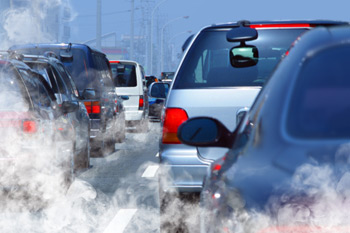A new study from Sweden published in BMJ Open has found that children who live in areas with more nitrogen oxide (NO2) and coarse particulate (PM10) air pollution are more likely to be given medicine for certain psychiatric disorders, compared to children who live in areas with cleaner air.
Anna Oudin, the lead researcher, commented “The results can mean that a lower concentration of air pollution, first and foremost from traffic, may reduce psychiatric disorders in children and adolescents.”
The study examined all children under age 18 in 4 counties in Sweden. Three of the counties contained the 3 largest cities, and the 4th county was more rural. The researchers calculated annual NO2 and PM10 levels for each neighborhood based on pollution monitors in the cities. The medicines were antipsychotics, sedatives, and sleeping pills. They noted that most of the medicines dispensed in this class were sedatives or sleeping pills. The research looked at children who were not taking the psychiatric medicines at the beginning of the study, and whether they were then given these medicines during the study.
The study showed that children living in more polluted areas were more likely to be dispensed the psychiatric medicines. The association was present at annual levels of NO2 as low as 15µg/m3, which is below the European standard of 40µg/m3. The U.S. standard for annual NO2 is 53ppb which is a different unit of measure and can’t be compared directly.
News article on the study: https://www.theguardian.com/environment/2016/jun/13/air-pollution-linked-to-increased-mental-illness-in-children
Link to the study in BMJ Open: https://bmjopen.bmj.com/content/bmjopen/6/6/e010004.full.pdf
12/06/2019





